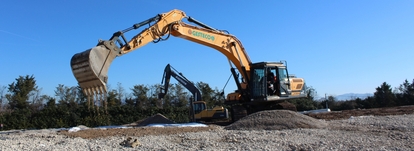The sustainability
For the management of excavation materials, we adopt solutions that are compatible with the environment, with a focus on circular economy.
Excavations referred to as "earth and rock from excavation" (used for the construction of roads, concrete structure foundations, underground parking, etc.) involve the production of a significant quantity of materials for which, in most cases, a sustainable management is provided, mainly aimed at reusing resources within the scope of environmental requalification projects for disused quarry sites.
Once extracted, the excavation materials undergo checks and analyses to verify that the parameters meet the identified requirements for the protection of human health and the environment.
Thanks to our internal Analysis Laboratory, we determine the analytical characteristics of the soil for its subsequent management. This classification of excavation materials allows us to identify the best conditions for their reuse and, consequently, to reduce the amount of waste to be disposed of.
This passage is of great relevance for companies that, thanks to our consultancy, have the opportunity to leave a positive impact on the environmental protection process, as well as to save considerable economic losses.
Massimo Lauzana
External Site Manager
